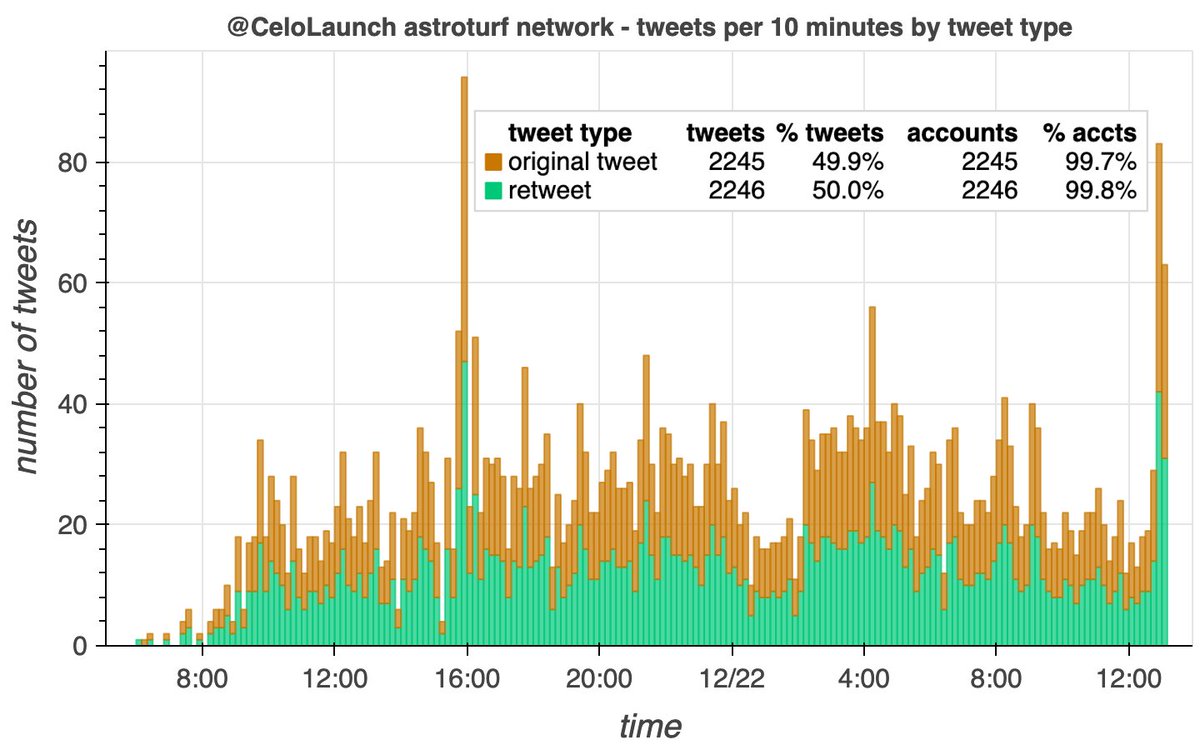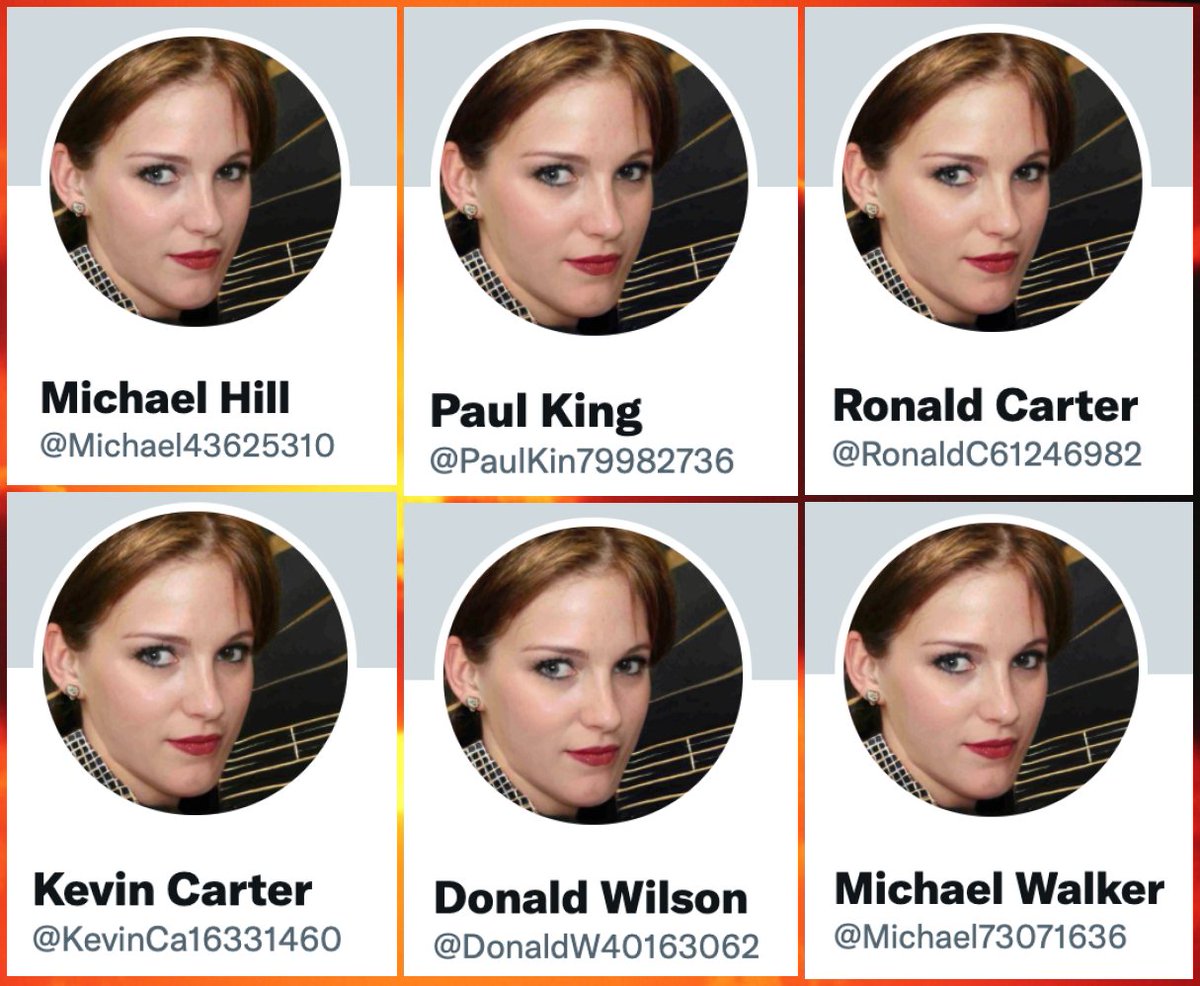Oh look, a bunch of accounts named George with GAN-generated profile pics are tweeting identical tweets. #HolidayShenaniGANs
(GAN = "generative adversarial network", the technique used by thispersondoesnotexist.com to generate fake face pics)
cc: @ZellaQuixote
(GAN = "generative adversarial network", the technique used by thispersondoesnotexist.com to generate fake face pics)
cc: @ZellaQuixote

The spammy Georges are part of a larger network of 2500 newly-created accounts promoting cryptocurrency launchpad site @CeloLaunch. Between them, these 2250 accounts have just 25 unique first names and 50 unique last names. All have zero likes, zero followers, and 1 or 2 tweets. 





Most of these accounts have tweeted exactly twice: a duplicated tweet promoting @CeloLaunch, and a retweet of a December 12th @CeloLaunch tweet (a few missed either the duplicate tweet or the retweet). All tweets were sent (allegedly) via the Twitter web app. 







All 2250 accounts in the network follow @CeloLaunch and at most one other account. Those most frequently followed (other than @CeloLaunch) are @ZelenskyyUa, @Ukraine, @elonmusk, and @ekrem_imamoglu. 

All 2250 accounts use GAN-generated profile pics. Unmodified GAN-generated face pics have the telltale feature that the major facial features are in the same position on every image*, which becomes evident when the images are blended together.
(*for now; StyleGAN 3 changes this)
(*for now; StyleGAN 3 changes this)
Despite the fact that one can produce as many unique GAN-generated face images as one's heart desires, the operator of this network in many cases reused the same image on multiple accounts. #YouHadOneJob 







As tends to be the case with large networks of accounts with GAN-generated pics, some of the accounts ended up with glitchy images ranging from hilarious to utterly creepy. 

Some other examples of common signs that a "face" may be GAN-generated in this thread:
https://twitter.com/conspirator0/status/1457051680902717446
• • •
Missing some Tweet in this thread? You can try to
force a refresh































